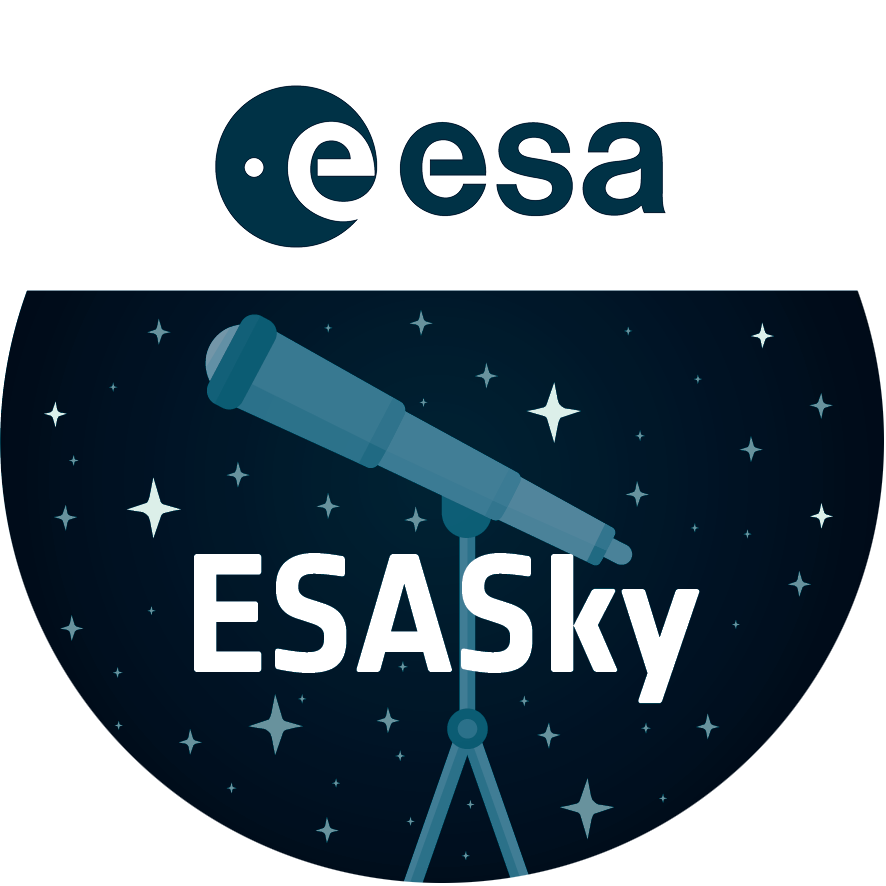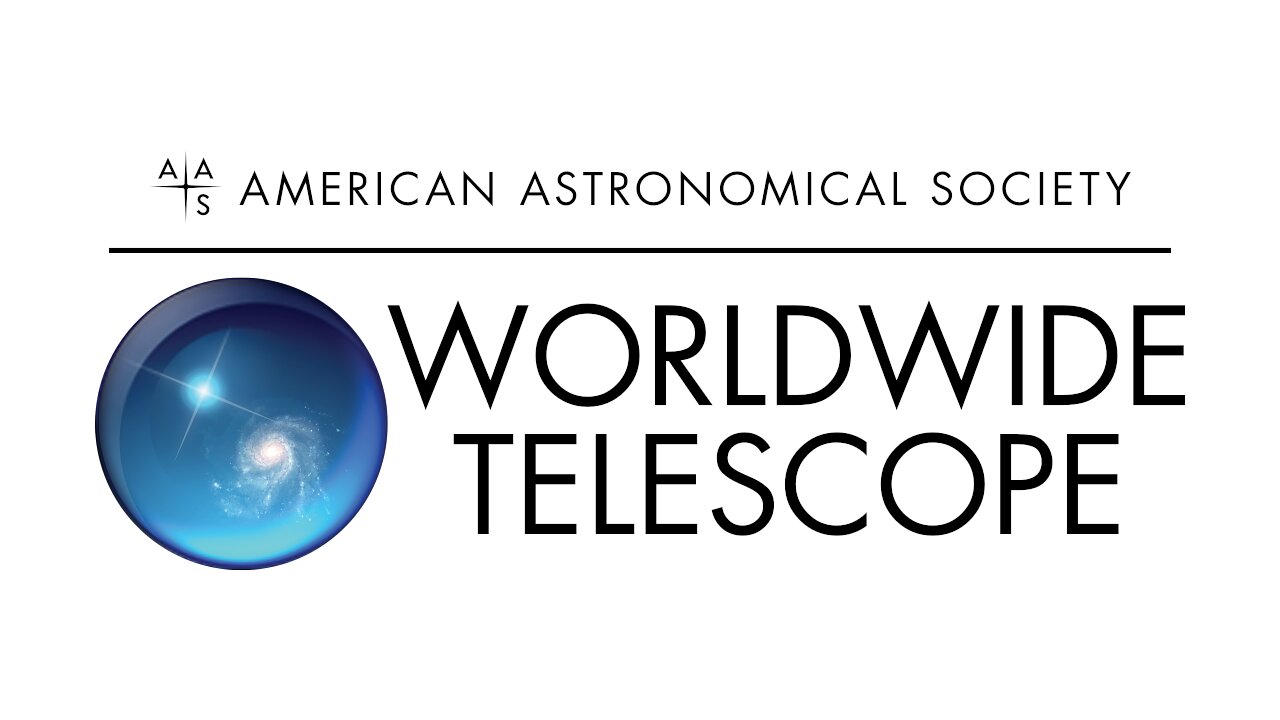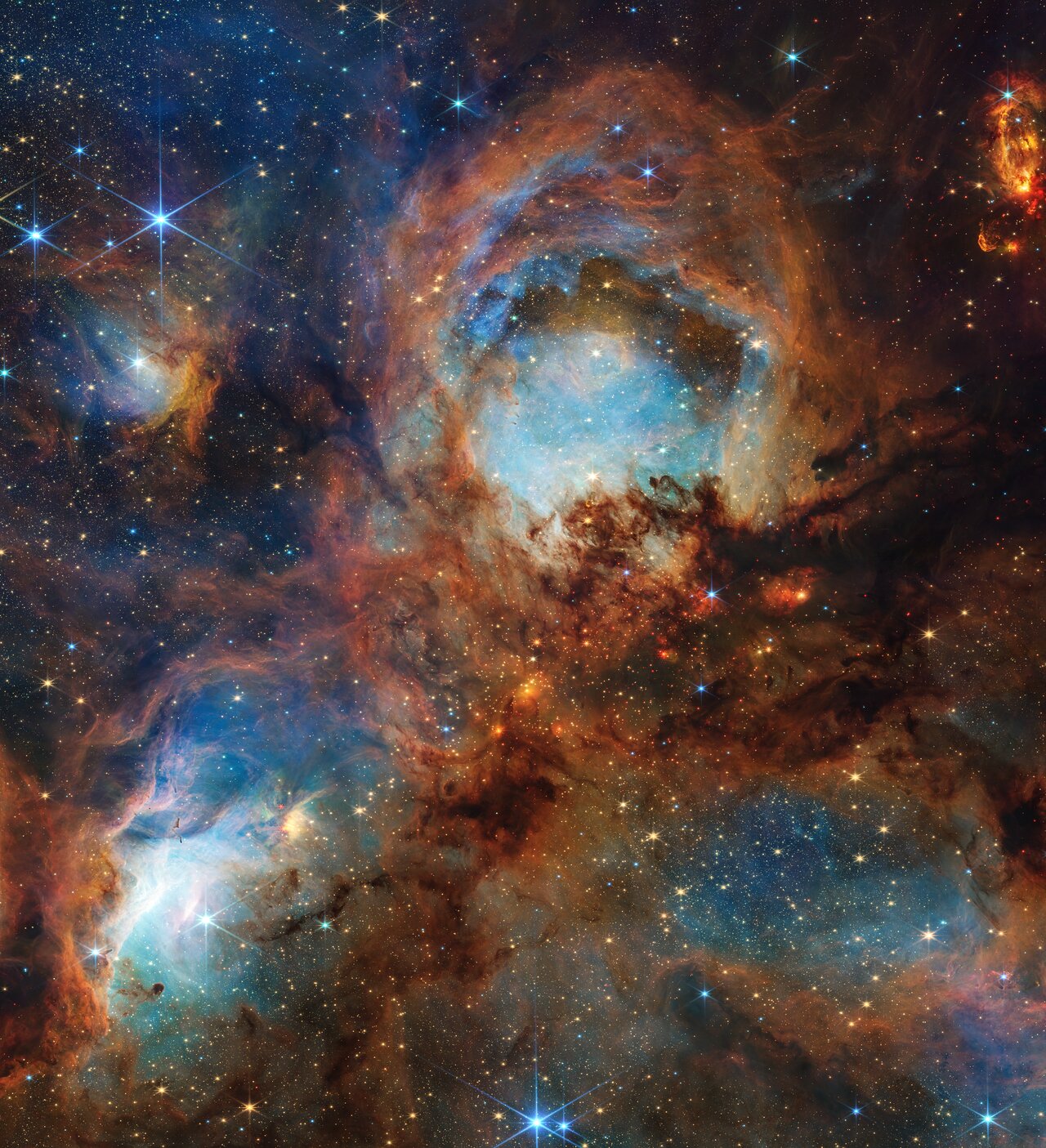About the Object
| Name: | NGC 6334 | |
|---|---|---|
| Distance: |
4000 light years | |
| Constellation: | Scorpius | |
| Category: | Anniversary Nebulae NIRCam | |
Coordinates
| Position (RA): | 17 20 42.01 |
|---|---|
| Position (Dec): | -35° 49' 37.76" |
| Field of view: | 5.76 x 6.32 arcminutes |
| Orientation: | North is 264.9° left of vertical |
Colours & filters
| Band | Wavelength | Telescope |
|---|---|---|
| Optical | 900 nm | James Webb Space Telescope NIRCam |
| Infrared | 1.87 μm | James Webb Space Telescope NIRCam |
| Infrared | 2.0 μm | James Webb Space Telescope NIRCam |
| Infrared | 2.77 μm | James Webb Space Telescope NIRCam |
|
Infrared
PAH | 3.35 μm | James Webb Space Telescope NIRCam |
|
Infrared
molecular hydrogen | 4.7 μm | James Webb Space Telescope NIRCam |
Cat’s Paw Nebula (NIRCam)
To celebrate the NASA/ESA/CSA James Webb Space Telescope’s third year of highly productive science, astronomers used the telescope to scratch beyond the surface of the Cat’s Paw Nebula (NGC 6334), a massive, local star-forming region. This area is of great interest to scientists, having been subject to previous study by NASA’s Hubble and retired Spitzer space telescopes, as they seek to understand the multiple steps required for a turbulent molecular cloud to transition to stars.
With its near-infrared capabilities and sharp resolution, the telescope “clawed” back a portion of a singular “toe bean,” revealing a subset of mini toe bean-reminiscent structures composed of gas, dust, and young stars.
Webb’s view reveals a chaotic scene still in development: Massive young stars are carving away at nearby gas and dust, while their bright starlight is producing a bright nebulous glow represented in blue. This is only a chapter in the region’s larger story. The disruptive young stars, with their relatively short lifespans and luminosity, will eventually quench the local star formation process.
The Cat’s Paw Nebula is located approximately 4,000 light-years away in the constellation Scorpius.
[Image description: A section of the Cat’s Paw, a local star-forming region composed of gas, dust, and young stars. Four roughly circular areas are toward the centre of the frame: a small oval toward the top left, a large circle in the top centre, and two ovals at bottom left and right. Each circular area has a luminous blue glow, with the top centre and bottom left areas the brightest. Brown-orange filaments of dust, which vary in density, surround these four bluish patches and stretch toward the frame’s edges. Small zones, such as to the left and right of the blue circular area at top centre, appear darker and seemingly vacant of stars. Toward the centre are small, fiery red clumps scattered amongst the brown dust. Many small, yellow-white stars are spread across the scene, some with eight-pointed diffraction spikes that are characteristic of Webb. A few larger blue-white stars with diffraction spikes are scattered throughout, mostly toward the top left and bottom right. Toward the top right corner is a bright red-orange oval.]
Credit:NASA, ESA, CSA, STScI
About the Image
| Id: | weic2513a | |
|---|---|---|
| Type: | Observation | |
| Release date: | 10 July 2025, 16:00 | |
| Related releases: | weic2513 | |
| Size: | 11055 x 12138 px | |




